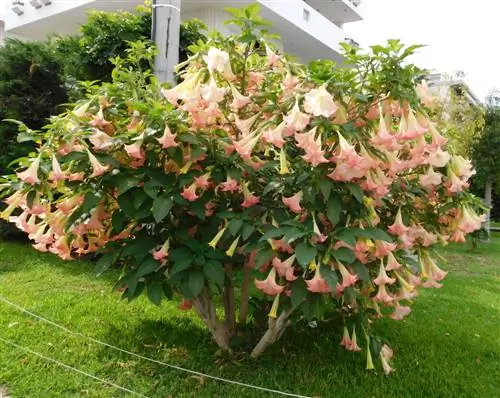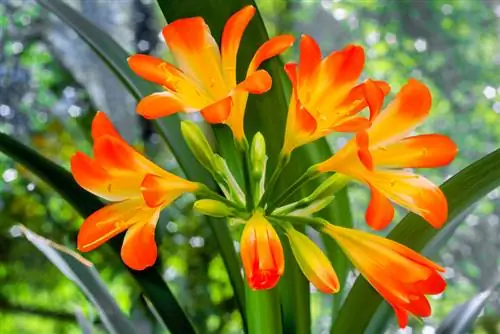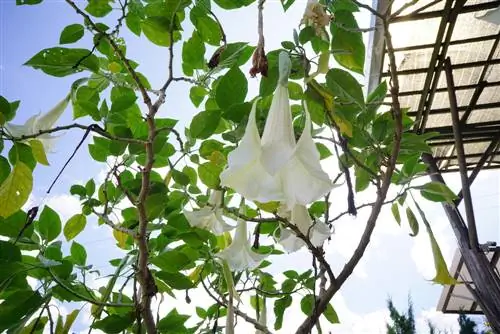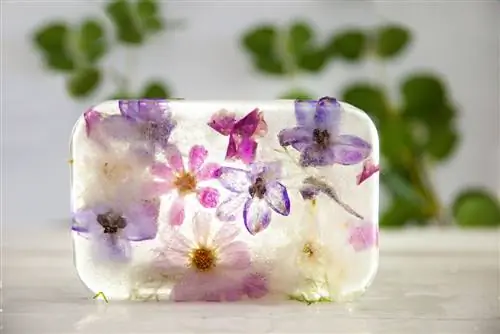- Author admin [email protected].
- Public 2023-12-16 16:46.
- Last modified 2025-01-23 11:21.
With non-native ornamental plants such as angel's trumpets, as a hobby gardener you have to put in some effort to relocate them in order to get them through the year in this country. You can ask yourself: aren't there winter-hardy varieties for year-round outdoor cultivation?

Are there hardy angel trumpets?
Angel trumpets are not hardy and cannot tolerate frost. They must therefore be housed in winter quarters at at least 10°C. However, there are varieties that are more resistant to cold, such as Brugmansia arborea, candida or vulcanicola, which are more likely to bloom and can bloom again in the winter quarters.
The dream of plantable angel trumpets
unfortunately it has to burst. Because, the sobering news first - there are definitely no winter-hardy varieties. The magnificent nightshade plant is and remains a plant from the South American subtropics and can tolerate absolutely no frost. This means: You won't be spared the hassle of moving back and forth between the garden or terrace and winter quarters, no matter which variety you choose.
Nevertheless, there is a subdivision within the angel trumpet genus that is relevant to this topic. Their area of origin extends from the mild regions on the Peruvian coast to 3000 m high areas of the Andes Mountains. The angel trumpet varieties are therefore generally divided into the warm and cold groups according to their specific areas of origin. Depending on the area of origin, the varieties are sometimes used to more, sometimes less cold.
Let's first note:
- Angel trumpets are generally not frost hardy and therefore cannot be planted out
- For outdoor culture in summer, relocation to winter quarters in autumn is essential
- however: some varieties are more resistant to cold than others
What this means for the angel trumpet owner
The specific cold sensitivity of the warm and cold varieties obviously affects how they behave and how you can deal with them.
Cooler flowering conditions for cold varieties
The cold varieties, for example Brugmansia arborea, Brugmansia candida or Brugmansia vulcanicola, produce flowers even at lower temperatures because of their higher cold tolerance. On the one hand, they show their flower decorations earlier in the summer vegetation phase. On the other hand, you can also expect another flowering in the winter quarters, as long as there is enough light and not necessarily colder than 10°C. Well, it's at least something! They are also generally more resistant to inhospitable weather conditions.
More sensitivity for warm varieties
The warm varieties, such as Brugmansia insignis, Brugmansia versicolor or Brugmansia suaveolens, generally bloom later in summer and generally do not produce any flowers in the winter quarters. So you can safely hibernate them in the dark. In return, they are naturally more heat tolerant and can tolerate heat phases better. However, you should definitely not expose them to full sun.






